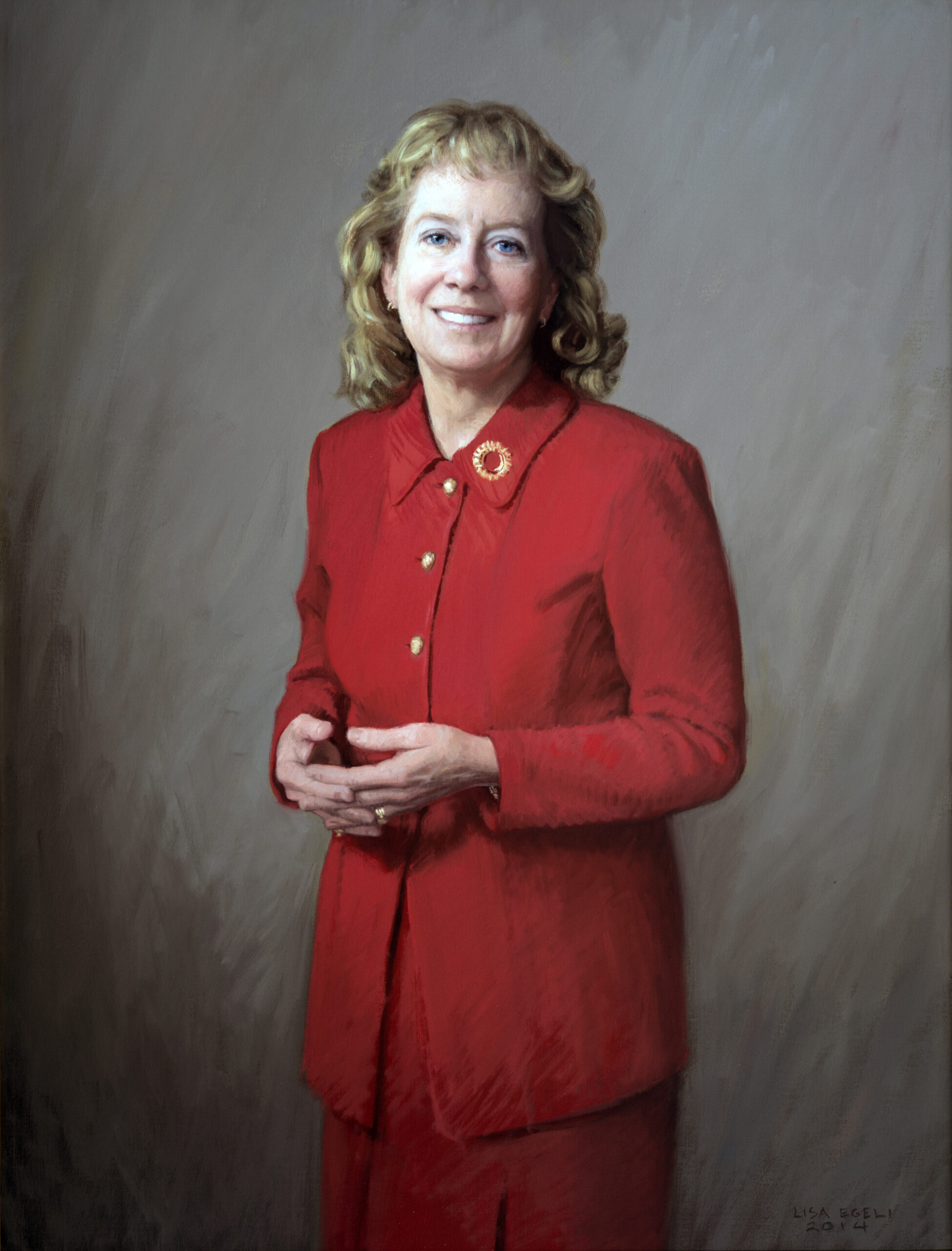Julie A. Freischlag

Julie A. Freischlag
- Artist:
- Lisa Egeli
- Date:
- 2014
- Medium:
- Oil on canvas
- Dimensions:
- 42 x 32 in.
Julie A. Freischlag
1955-
Freischlag, first female surgeon-in-chief of The Johns Hopkins Hospital, was born in Illinois. She received her bachelor’s degree in biology from the University of Illinois in 1976, and her medical degree from Rush Medical College in 1980. Freischlag completed residencies in general surgery and vascular surgery at the University of California, Los Angeles Medical Center.
From 1987 to 1989, Freischlag was assistant professor at the University of California, San Diego, Medical Center. She returned to UCLA in 1989 as assistant professor, also serving as chief of vascular surgery for Wadsworth Veterans Administration Medical Center. In 1992, she accepted a position as associate professor of surgery and vice chair of vascular surgery at the Medical College of Wisconsin, Milwaukee. While there, she served as chief of vascular surgery, and later, chief of surgery for the Zablocki Veterans Administration Medical Center.
In 1998, Freischlag again returned to UCLA as professor and chief of vascular surgery, and director of the Gonda Vascular Center. Then, in March 2003, Freischlag became the William Stewart Halsted Professor and Director of the Department of Medicine at Johns Hopkins, as well as surgeon-in-chief of The Johns Hopkins Hospital. She was the first woman and only the sixth person to serve in those posts.
As director of surgery for over a decade, Freischlag spearheaded advances in the areas of patient safety, faculty diversity, research, and education. She also improved coordination among the hospital’s leadership teams and boosted surgical volumes. She also oversaw the creation of the Center for Surgical Trials and Outcomes Research (CSTOR), which gives investigators the resources and training they need to pursue their study goals. In addition, Freischlag made it a mission to improve patient safety, and worked with the departments of nursing and anesthesiology to implement pre-surgery briefings to clarify team members’ roles, and post-surgery debriefings to analyze what could have been done better.
In 2014, Freischlag left Johns Hopkins to become vice chancellor for human health sciences and dean of the school of medicine at the University of California, Davis. She oversaw UC Davis Health System’s academic, research, and clinical programs, including the School of Medicine, the Betty Irene Moore School of Nursing, the 1,000-member physician practice group, and UC Davis Medical Center, a 619-bed acute-care hospital.
In 2017, Freischlag was appointed CEO of Wake Forest Baptist Medical Center. She oversees Wake Forest Baptist’s academic health system, which includes Wake Forest School of Medicine, Wake Forest Baptist Health, Wake Forest Innovations, Wake Forest Innovation Quarter, and a network of hospitals, physician practices, and medical/surgical services.
Her national leadership includes serving as a former governor and secretary of the Board of Governors and a regent and immediate past chair of the Board of Regents of the American College of Surgeons. She is the immediate past president of the Society for Vascular Surgery and a past president of the Association of VA Surgeons and the Society of Surgical Chairs. She has served as president of the Society for Vascular Surgery Foundation. Freischlag was the editor of JAMA Surgery from 2005 to 2014 and a member of the editorial boards of the Annals of Vascular Surgery, Journal of the American College of Surgeons, and British Journal of Surgery. She was elected to the National Academy of Medicine in 2015.
Freischlag has published more than 225 manuscripts, abstracts, and book chapters, primarily addressing the treatment of abdominal aortic aneurysms, carotid artery disease, and peripheral vascular disease utilizing outcome data and clinical trials. Freischlag is an internationally recognized expert in the treatment of thoracic outlet syndrome. Her research involves a prospective randomized trial that tracks more than 800 patients from thirty-four Veterans Affairs Medical Centers across the country to compare outcomes in patients who received either open or endovascular repair of their abdominal aortic aneurysm.
"*" indicates required fields
